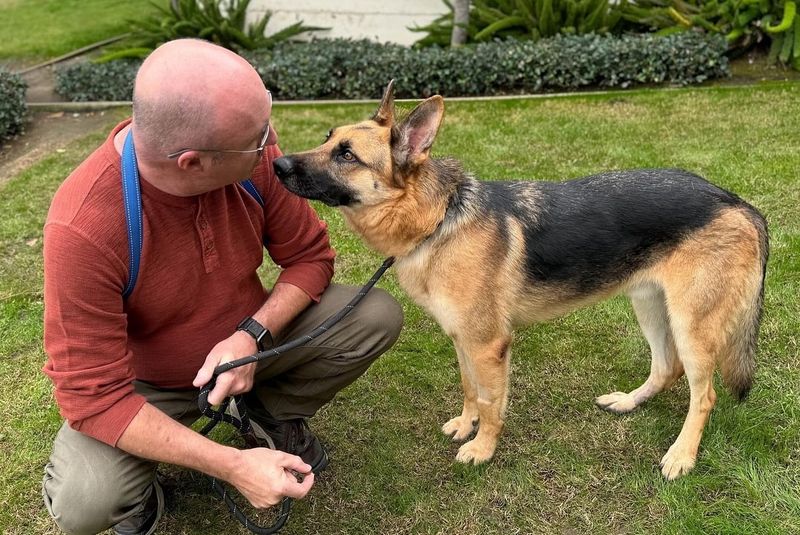The process of adopting a dog is filled with hope and excitement. However, some breeds find themselves back in shelters more often than others. Various reasons contribute to these returns, from mismatched expectations to lifestyle changes. By understanding which breeds are more frequently returned, potential adopters can make more informed decisions, ensuring a forever home for their furry companions. Here, we explore ten breeds that find themselves back in shelters more often than others. These insights may surprise you and help pave the way for more successful adoptions in the future.
Jack Russell Terrier
“Who wouldn’t be charmed by the spirited Jack Russell Terrier? With boundless energy, these dogs love to play and explore. Yet, their vivacious nature can be overwhelming for some owners. They require ample exercise and mental stimulation, which, if unmet, can lead to behavioral issues.
Training and patience are key to managing this breed’s exuberance. Though small in size, they have a mighty personality that demands attention. A home prepared for their activity level reaps the rewards of a loyal and adventurous companion.
Fun fact: Jack Russells were originally bred in England for hunting foxes.”
Dalmatian
“With their distinctive spots, Dalmatians are a sight to behold. Known for their history as carriage dogs, they’re athletic and energetic. However, their high energy levels can be challenging for some owners, leading to returns.
In need of regular exercise and firm training, Dalmatians thrive in active households. They are loving but can be independent, sometimes requiring patience to train.
A quirky fact: Dalmatians often have a unique affinity for horses, a nod to their carriage dog days. This historical tidbit adds charm to their already captivating presence.”
Chihuahua
“Tiny but full of character, the Chihuahua often finds its way back to shelters. Their small size belies a larger-than-life personality that can be demanding.
These dogs are fiercely loyal to their owners but can be wary of strangers. This protective nature might not suit every household, especially those with young children.
An interesting fact: Despite their size, Chihuahuas have one of the longest lifespans among dogs. Ready for a long-term commitment? This breed promises years of companionship.”
Border Collie
“The highly intelligent Border Collie is unmatched in its herding abilities. Known for their work ethic, these dogs excel when given a job to do.
However, their intelligence requires stimulation; without it, they can become restless and destructive. Owners need to provide mental challenges to keep them happy.
Did you know? Border Collies are often considered the smartest dog breed. Their impressive cognitive abilities and agility make them stars in canine sports, but also demanding companions for the unprepared owner.”
Cocker Spaniel
“With their long, floppy ears and gentle eyes, Cocker Spaniels are hard to resist. Yet, their sensitive nature requires understanding and gentle handling.
These dogs form strong bonds with their family, which can lead to anxiety if left alone for extended periods. Regular companionship and activity are vital.
Fun fact: Cocker Spaniels were originally bred as hunting dogs, adept at retrieving game from water and land. Their playful nature and history make them delightful, yet sometimes demanding, family members.”
Siberian Husky
“Siberian Huskies captivate with their striking looks and wolf-like appearance. These dogs are built for endurance and excel in activities like sled pulling.
However, their independent nature and high energy can be too much for some owners. Huskies require consistent training and a secure environment to prevent escapes.
Did you know? Huskies have a unique ability to regulate their metabolism, a trait that helps them endure long journeys. This breed’s fascinating abilities come with the need for a committed and energetic owner.”
Beagle
“With their soulful eyes and merry disposition, Beagles are a family favorite. Known for their exceptional sense of smell, they are often guided by their noses.
This scent-driven nature can lead them into trouble, requiring a secure yard and vigilant owner. Beagles are curious and need space to explore safely.
An intriguing tidbit: Beagles were bred for hunting and have been used in various detection roles. Their ability to track makes them valuable, yet sometimes challenging, companions.”
Shih Tzu
“Shih Tzus, with their luxurious coats and imperial history, often find themselves misunderstood. Bred as lap dogs for Chinese royalty, they thrive on attention and affection.
However, their high grooming needs and desire for companionship can be taxing for some. A pampered lifestyle suits them best, requiring devoted care.
Fun fact: Shih Tzus were once prized by Chinese emperors and guarded fiercely. Their regal history and loving nature make them charming, yet demanding, pets.”
Bulldog
“Bulldogs, with their distinctive wrinkled faces, exude charm and relaxation. Known for their easygoing personalities, they are perfect for quieter homes.
However, their health issues and need for a controlled environment can be challenging. Bulldogs require attention to diet and exercise to maintain their well-being.
Did you know? Bulldogs were originally bred for bull-baiting, a history that contrasts with their current gentle demeanor. They embody a resilient spirit that has transformed into a beloved companion animal.”
German Shepherd
“A symbol of loyalty and courage, the German Shepherd is a versatile breed. Known for their intelligence, they excel in roles like police work and search and rescue.
However, their need for structured training and activity can be overwhelming for some. Without proper guidance, they may develop behavioral issues.
A noteworthy fact: German Shepherds were developed in Germany for herding and protecting sheep. Their adaptability and dedication make them exceptional, yet sometimes demanding, family dogs.”










